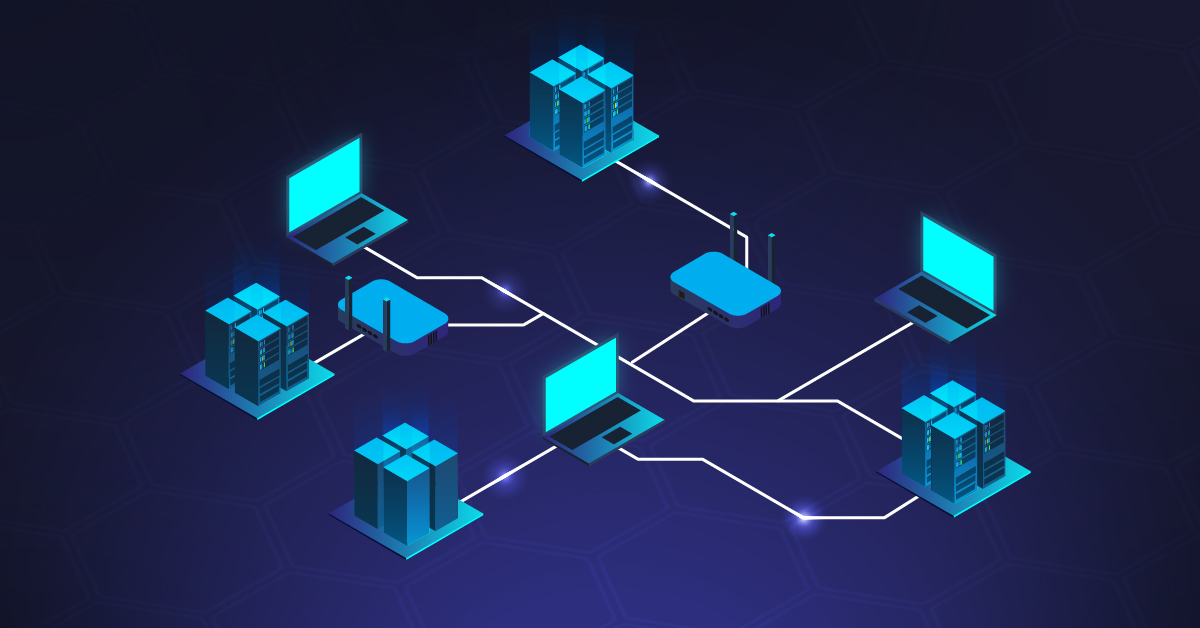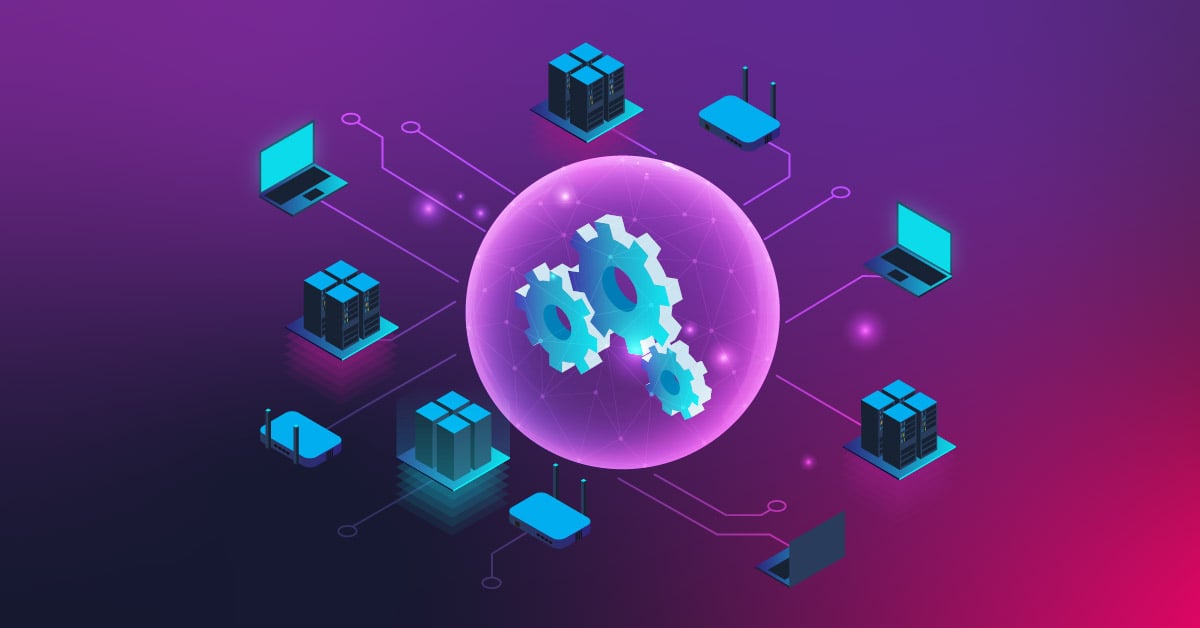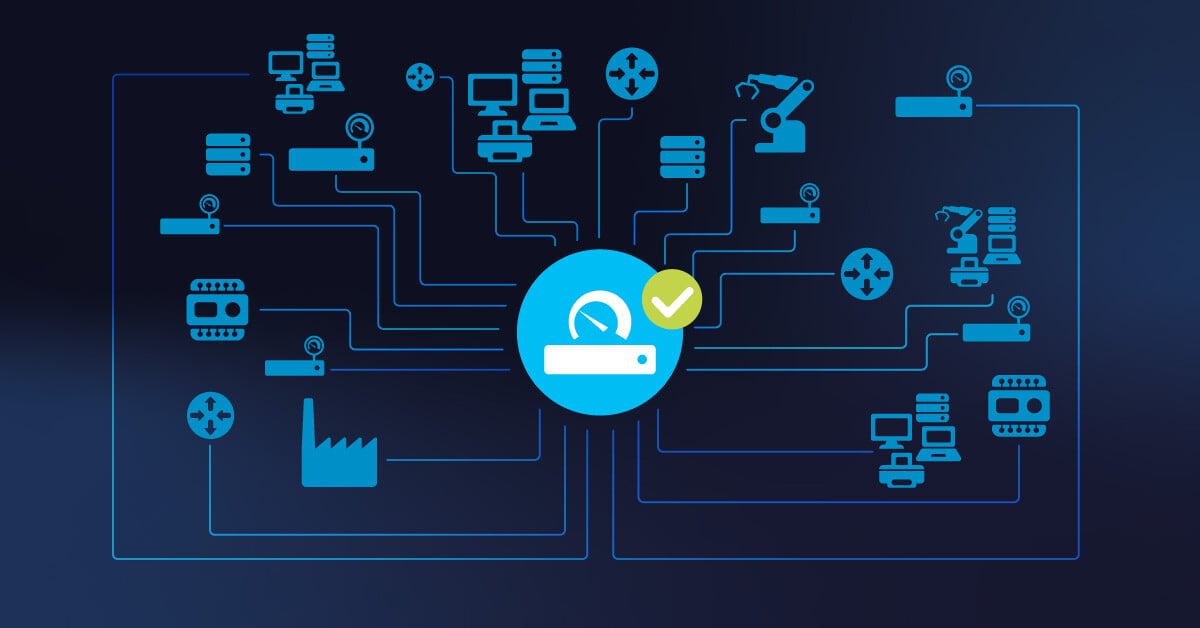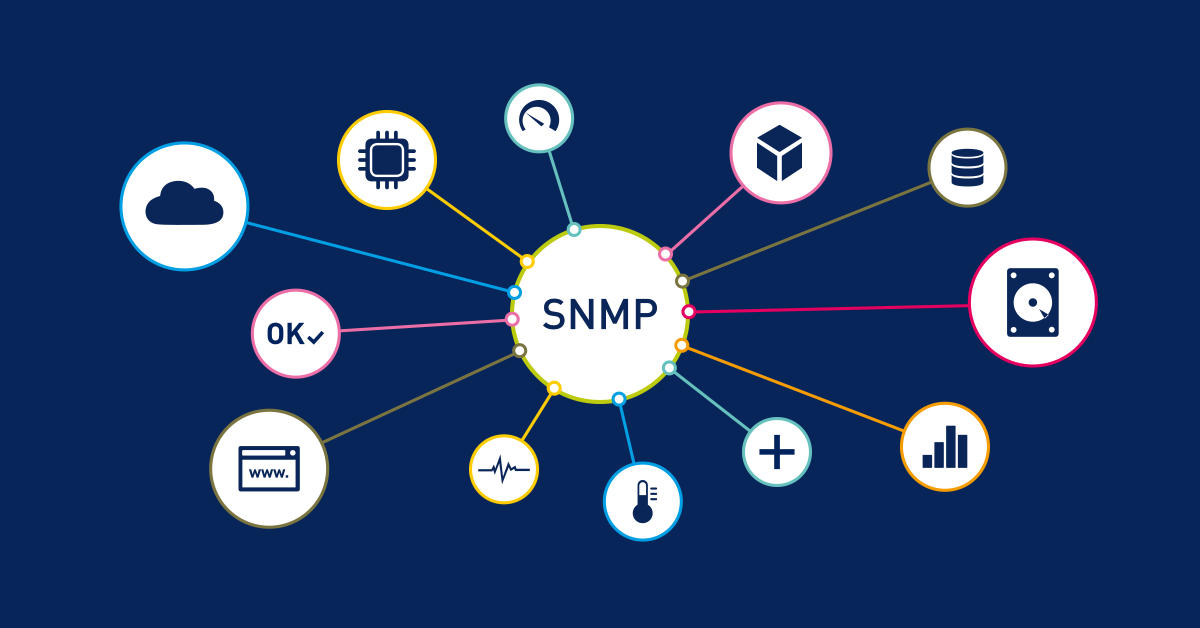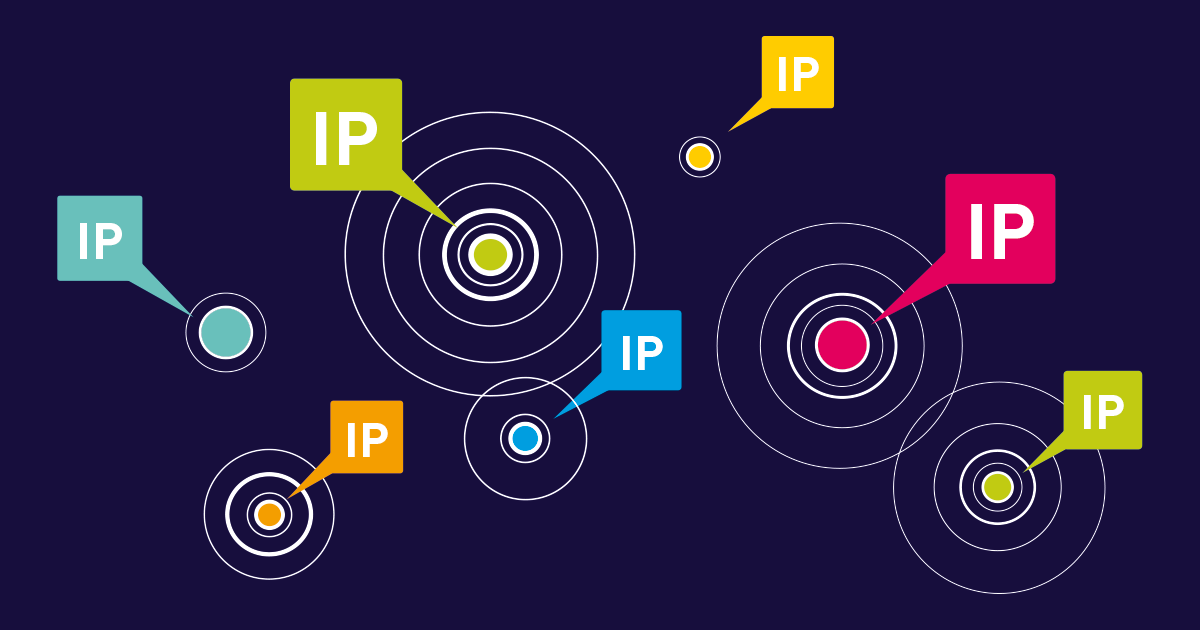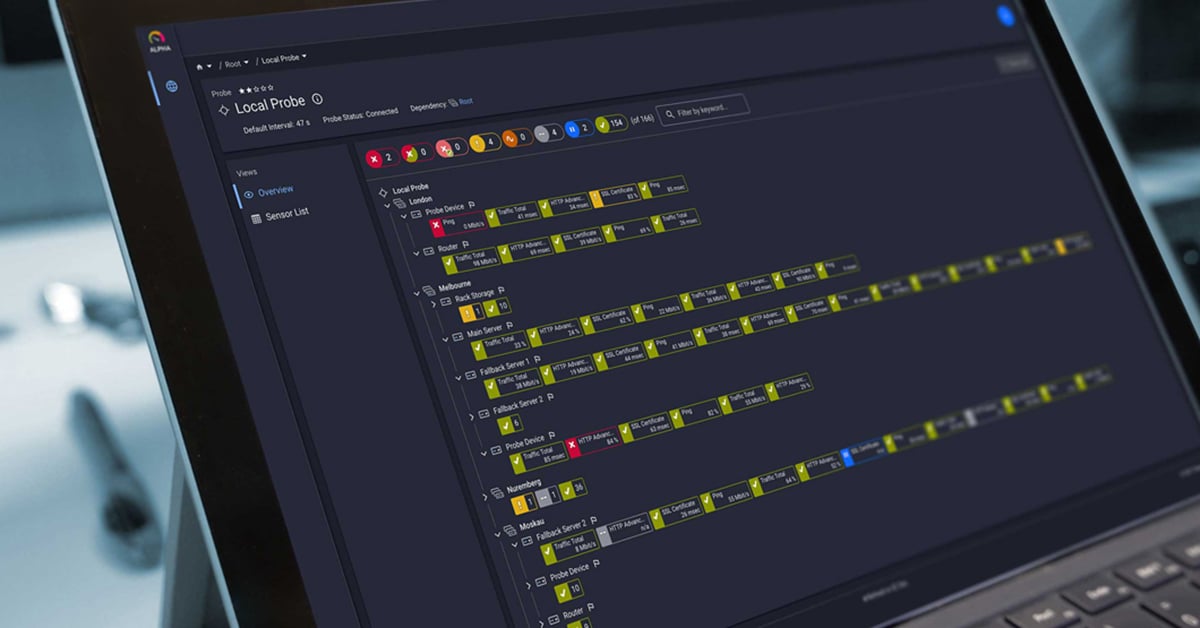You probably haven't thought much about network optimization until you froze mid-video call, trapped in your webcam's unflattering side-eye. (Or maybe it's just me?) Equally unsatisfying is the spinner of doom as you watch your coworker's hands wring at the screen waiting for you to share yours. Welcome to the club of network optimization evangelists, where no one ever wanted to join until things started hurting on the digital level. 🥲
Network optimization is so much more than the buzzword IT teams love to drop while strutting around the office in polo shirts with their logo embroidered on the chest. Optimization is what you need to keep your employees, customers, and sanity sane, while putting bandwidth where it belongs: on top of its game.
In this post, we take a look at 10 tried-and-true network optimization techniques that will help you optimize network performance and eliminate performance issues.
1. Measure and monitor network traffic
You can't manage what you can't measure. That means your first task when optimizing your network is to assess your current situation. First, monitor and measure what's already happening on your network and how apps are using the bandwidth available. Use this information to establish a baseline of normal performance (look at all those 4K cat videos clogging up your streams, peak usage times, bottlenecks, you name it) so you know when and how to optimize what's already there.
Network optimization tools like Paessler PRTG Network Monitor will help you visualize network traffic, so you can pinpoint network activity. PRTG's sensors include specialized traffic monitoring such as dedicated QoS monitoring of VoIP performance, SNMP traffic and bandwidth analysis, and more. Put your monitoring cameras on every stretch of digital highway.
Visibility lets you quickly identify patterns in data flow that would otherwise go undetected, so you can make informed decisions on optimizing your network rather than blindly throwing things at the wall to see what sticks. Keeping track of key metrics like latency, throughput, and packet loss sets the stage for all your future network optimization strategies and improves overall network performance.
2. Traffic analysis and prioritization
Bandwidth is a precious resource, and not all of your network traffic is created equal. Do you give the same road priority to an ambulance and a teenager driving to the store to pick up ice cream? I hope not. Quality of Service (QoS) policies make sure the critical apps are getting the green light (Video Conferencing and VoIP are the most important), and your boss doesn't hear you as a robot. If your company's customer-facing web services are crawling slower than a fresh TikTok user will likely abandon the site. That's even scarier than angry IT managers.
By prioritizing traffic by business needs, you make sure your network resources are put where they will have the most significant impact on your user experience.
Your network moves from a free-for-all digital stampede to a well-organized affair where the important stuff has a VIP lane that it can access even during rush hour.
Quality of service monitoring is also critical for real-time applications that don't have the luxury of some jitter and latency that non-time-sensitive transfers can stand.
3. Network infrastructure optimization
Your network hardware is your network performance baseline, so you need a strong one if you want to build on top of it. Trying to run modern applications on decade-old equipment is like a modern video game on a calculator. Painfully slow and frustrating. So take the time to update the firmware on your routers, switches, and other network devices regularly. They aren't just there to bug you – these updates often have performance enhancements and security patches that fix vulnerabilities.
You may need to consider upgrading legacy network devices. They aren't museum pieces yet, but sometimes your network hardware is just plain old. Don't ignore your cabling infrastructure either. It's not only unattractive; a spaghetti ball of dusty, out-of-date cables is a performance killer.
And while you're at it, take the time to optimize your network design. Sometimes the problem is not the components but rather how they are laid out. After all, you could put the best traffic lights in the world on a roundabout, but they're not going to help much. Strategic network infrastructure design forms the backbone upon which all other optimization efforts will rest.
This multiplies the impact of other optimization strategies and paves the way for long-term network performance benefits. For wireless network environments, access point placement and channel management are also key points in optimizing your network infrastructure.
4. Bandwidth management
Bandwidth is a finite commodity, a pizza slice at an office party where there's never enough to go around. In fact, it's a given that there's always someone taking more than their fair share. Implement traffic shaping techniques to control how much and how fast network traffic flows and to keep everything performing smoothly even at peak usage times.
For non-business-critical applications, you might even consider bandwidth throttling. Your fantasy football scores will have to wait as that customer presentation downloads, I'm afraid. 😋
Compression techniques can squeeze the data packets traveling across your network to make them more efficient and reduce the bandwidth required for data transfer. Bandwidth management helps make sure that critical apps don't go starving while everything else gorges, creating an efficient network environment where network resources are allocated based on your business needs and not just whoever arrives first, first.
For organizations with constrained internet access, organizations experiencing explosive data growth, or both, bandwidth management is particularly important.
5. Network segmentation
Network congestion is the enemy of efficient network performance, and network segmentation is the policy to address it. Network segmentation breaks your digital environment into neighborhoods where devices only talk to others in the same area. Create virtual LANs (VLANs) to segment traffic by department, purpose, or need, or implement subnetting, a process for dividing your network into smaller, more efficient pieces that have less broadcast traffic to handle.
You can even go one step further and create network zones, organizing devices by type to create well-defined boundaries that improve your network's performance and security. The benefits include not just better day-to-day performance but also containing network issues when they occur. A performance issue on one segment doesn't drag down the rest of the neighborhood - which is a good thing because your whole network just can't afford to go dark.
Approaches like SD-WAN take network segmentation even further and provide even more granular control over how network traffic is prioritized between segments.
6. Caching and content delivery optimization
The whole point of caching is that you don't have to go get it twice. So store frequently accessed files and network data on local servers or network nodes, eliminating the need to pull data across the network (or internet) every time it is needed. If you have public facing resources, consider Content Delivery Networks (CDNs), which rely on distributed servers to provide content from locations closest to users.
DNS caching speeds up domain name resolution, reducing response times to connect. It's like having a fridge in the kitchen instead of having to walk to the corner store every time you're hungry - way more efficient and less work.
Reducing redundant transfers means freeing up bandwidth for other tasks while also improving response times for your users. What's great about caching and similar techniques is that you get some of the most noticeable benefits for your users with the least amount of effort. Caching is one of the most important optimization techniques for its return on effort (ROE), no pun intended.
If your organization has multiple offices or data centers, cache placement is also critical. Putting caches in the right place can dramatically reduce the amount of data crossing your expensive WAN links.
7. Network security
Security and network performance go together like peanut butter and jelly; you need both, or the whole thing tastes wrong. A secure network is rarely a high-performing one. Adding firewalls and intrusion detection systems act as digital bouncers at the door of your network club, keeping unwanted visitors from consuming resources and slowing down services. Schedule regular network security audits, by the way, because what you don't know CAN hurt you on the performance front, as well as the security side of things.
DDoS protection helps ensure that someone can't throw so much traffic at your network that legitimate users can't get through. Use encryption for all sensitive data transmission, because you never know what information you don't want others to have. The upside is that when you make network security part of your optimization strategy instead of an afterthought, you get the best of both worlds and don't need to choose between security and performance.
Automation of security responses is another key aspect in this approach, as you'll need to identify network issues and react to them immediately without affecting network availability or causing downtime.
8. Protocol optimization
Network protocols are the rules your data packets use when traveling across the network. Adjusting some of these rules can help you optimize their performance. Tweaking TCP window sizes help adjust how much data can be in transit at one time, finding the ideal balance of throughput and reliability for your specific network. Adjusting the MTU allows you to optimize the size of data packets on your network. (Spoiler alert: sometimes bigger doesn't equal better.)
DNS resolution settings are also a good candidate for tuning, shaving time off of how long it takes to look up addresses, which reduces the time it takes to establish connectivity. Consider IPv6 where it makes sense. It's not only the future of addressing, but it might also improve routing efficiency. A few small configuration adjustments here and there can have an outsized impact on performance and often require very little effort and investment while yielding significant improvements.
Protocol optimization becomes even more important in geographically dispersed organizations, where data has to travel long distances on its way across a patchwork of networks with various performance characteristics.
9. Load balancing
Load balancing is like going to a supermarket with multiple checkout lanes instead of one. By distributing incoming network traffic across multiple servers or network paths, you reduce the load any single component has to bear and keep things working even when one component fails. Load balancing both improves availability by removing single points of failure and enhances scalability by making it easy to add more capacity as needed without interrupting ongoing services. And most importantly, better performance at peak times when everyone shows up to use the network simultaneously.
Modern load balancing solutions have much more granular intelligence in their routing decisions and can factor in not only server health and current load but the types of request being processed, routing to the appropriate server based on business logic. Load balancing helps spread the work out across many systems rather than overburdening some and leaving others free, extending the useful life of your hardware and providing a more resilient IT infrastructure to cope with unexpected traffic peaks without grinding to a halt.
For high-performance environments such as data centers, advanced load balancing algorithms might even be able to anticipate (and prevent) network congestion before it happens.
10. Regular maintenance and upgrades
Maintenance is the forgotten element in the optimization process. Yet it's like an annual car tune-up: if you want your network to perform at its best, you need to give it regular attention to ensure it's working correctly. Schedule regular firmware and software updates to network devices, by the way. Yes, you need to install them; the annoying "remind me later" button exists for a reason.
Hardware health checks are also a good idea, so you catch the heat, dust, and aging components before they cause problems. And just because things are running smoothly doesn't mean you should slack off on performance testing. Schedule regular checks to ensure you're getting the results you're being told you're getting, so you can pinpoint any sub-par results before they become major network issues through proper troubleshooting.
Network maintenance may not be the most exciting part of the network performance optimization process, but it's a crucial step and often the difference between a network that performs and one that doesn't. On top of that, you'll thank yourself down the road when troubleshooting issues since well-maintained networks are much easier to work with. You'll always have current documentation, and with proper tracking, configurations are less likely to vary from one component to another.
The road is yours to cruise on: your optimized digital autobahn
Phew, we made it! 🎉 You should now have all the network optimization knowledge you need to supercharge your modern network from a congested country lane into an autobahn of digital awesomeness.
The advantages of network optimization are many: better user experience, less downtime, improved application performance, and reduced costs by making the most efficient use of existing resources.
So the next time your video call is crystal clear, your large file transfers happen in seconds instead of days (which is normal in today's modern offices), and your employees work together without a hitch across continents and time zones, take a moment and pat your network on the back because it's working hard to make all this possible and won't even take credit.
Network optimization is not a one-time project but an ongoing practice that must be adjusted as your business and technology needs change - think of it as regular check-ups and a healthy diet for your network, with far less sweaty gym selfies and more satisfied end-users.
And if anyone asks you how you managed to get it to this state of networking nirvana, just smile mysteriously and say, "I just followed the ten commandments of network optimization." Send them a link to this post (hint, hint); because bandwidth wisdom sharing is the highest form of IT kindness. ❤️
Explore more resources
- PRTG Network Monitor - An all-in-one network monitoring solution
- Network Optimization Guide - Learn more about optimizing your network
- Network Analyzer with PRTG - Analyze your network traffic for optimization opportunities
- Monitoring Syslog Facilities - Centralize and analyze log data across your network
- PRTG Maps & Dashboards - Visualize your network performance
Happy monitoring, friends! 🙌
Ready to optimize your network performance? Start your free 30-day PRTG trial and access all 250+ monitoring sensors mentioned in this guide!
 Published by
Published by 




